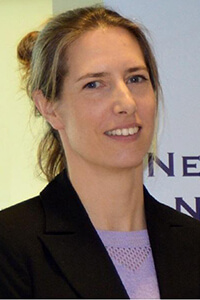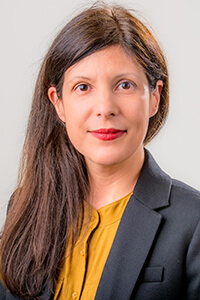Non-Invasive Brain Stimulation Continued to Help Veterans with PTSD a Year After Treatment
Non-Invasive Brain Stimulation Continued to Help Veterans with PTSD a Year After Treatment

In two related published papers, a research team that included three recipients of BBRF grants has reported evidence suggesting that a form of non-invasive brain stimulation may be an effective new treatment for post-traumatic stress disorder (PTSD).
The evidence is based on a clinical test of iTBS (intermittent theta-burst stimulation) involving 50 veterans diagnosed with PTSD. Half of the participants received active iTBS treatments for 4 weeks. The other half received a placebo version of iTBS stimulation for the first two weeks of the trial, then received 2 weeks of active iTBS treatments. The groups were selected randomly and both participants and doctors administering the treatments were blinded as to which participants were in the two groups. The trials were conducted at the Center for Neurorestoration and Neurotechnology at the VA Providence Healthcare System; team members were also affiliated with Brown University.
Their results, appearing in the American Journal of Psychiatry, showed therapeutic benefits when assessed at the end of the second week in the group receiving active iTBS treatments from the start of the trial, as compared with the group that had only received placebo stimulation to that point. (The placebo treatments were designed to feel like active stimulation but did not deliver actual stimulation to the brain.)
“At 2 weeks, active stimulation improved social and occupational function,” the team reported, and there were indications of reduced PTSD symptoms as well as relief of depression in participants whose PTSD was accompanied by depression. One month after the trial ended, reassessment of the participants found “clinically meaningful and statistically significant reductions in PTSD, depression, and social and occupational function.”
iTBS is an FDA-approved form of non-invasive brain stimulation that delivers the same amount of stimulation given in rTMS (repetitive transcranial magnetic stimulation) treatments, first approved for depression 12 years ago and now also approved in obsessive-compulsive disorder. iTBS sessions are each 3-10 minutes in duration, compared with 37.5 minutes for standard rTMS sessions. While rTMS treatments for depression target the brain’s left dorsolateral prefrontal cortex (DLPFC), this iTBS trial targeted the right DLPFC. During the trial, most of the participants continued taking various medications that they had been prescribed previously.
One intriguing result of the trial was the fact that most of the clinical improvements from stimulation occurred early, during the first week of active treatments. The team wanted to know more about the relationship between the amount of iTBS stimulation given and the impact on symptoms over time, beyond one month. Among those who benefited, did the effects last, and if so, for how long?
Hence, they conducted a second study that looked at 46 of the 50 participants of the original trial, assessing how they fared one year after the original 2- and 4-week active iTBS treatments ended. Those results were published in the journal Neuropsychopharmacology.
Of the 46 participants whose records were studied over the following year, 24 had received 4 weeks of active iTBS in the original trial and 22 had received 2 weeks of active treatment and 2 weeks of placebo treatments. 22 of the 46 (48%) relapsed over the following year: 1 died of an overdose, 3 were admitted to hospitals for psychiatric treatment, and 18 sought re-treatment with brain stimulation (all received rTMS, not iTBS).
Of those who had received only 2 weeks of active iTBS, 64% relapsed; of those who had received 4 weeks, the relapse rate was only 33%. Just as impressive, the average time until relapse in the “2-week” group was 182 days, compared with 296 days in the 4-week group.
The team says their results “provide real-world support” for the use of iTBS in treating PTSD, especially in view of the fact that the veterans they studied are part of a “difficult-to-treat population” that often has comorbidities including major depression, anxiety, substance abuse and suicidality.
The team said another aspect of their results were encouraging. Each of the 50 veterans taking part in the original study were given a “resting-state” fMRI brain imaging scan prior to the beginning of the trial. In their 1-year follow-up paper, the team concluded that functional connectivity of the brain’s posterior cingulate cortex (PCC) as measured in the pre-treatment fMRI scans, was predictive of patient outcomes a year following treatment. Importantly, they identified two sub-regions whose connectivity consistently differed in participants who did and did not relapse within a year of the end of iTBS treatments. These are potential biomarkers to assist in future clinical applications of iTBS in treating PTSD, the team said.
Mascha van’t Wout-Frank, Ph.D., a 2010 BBRF Young Investigator, and Jennifer Barredo, Ph.D., a 2019 BBRF Young Investigator, co-authored both studies. Benjamin D. Greenberg, M.D., Ph.D., a 2000 BBRF Independent Investigator, co-authored the first study. Noah S. Philip, M.D., of VAPHCS and Brown University, led both studies.




